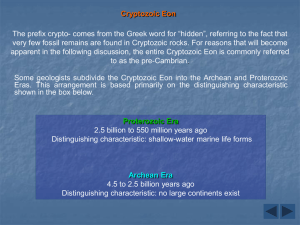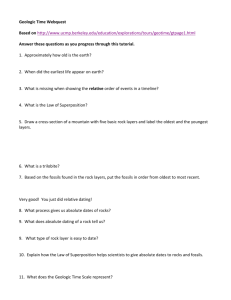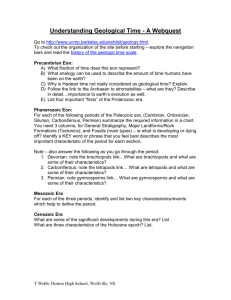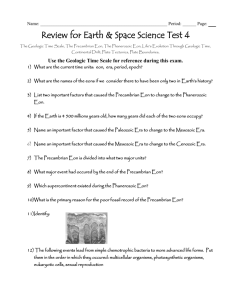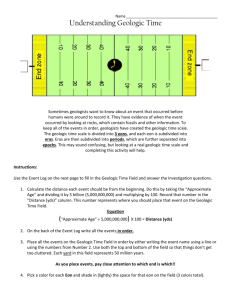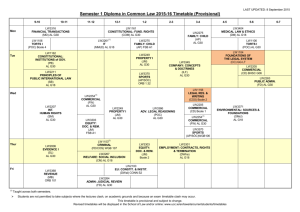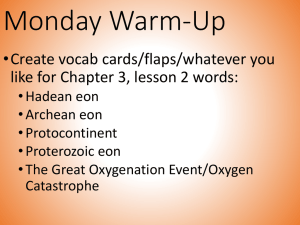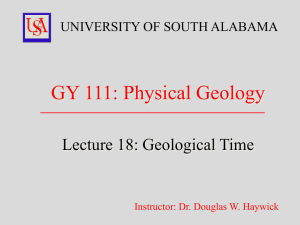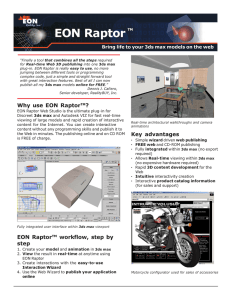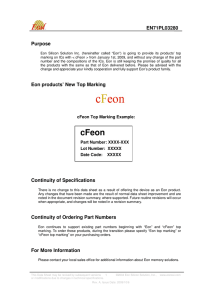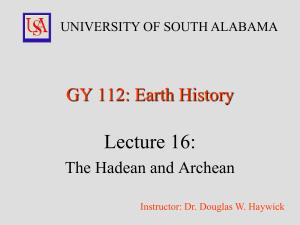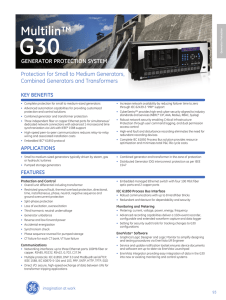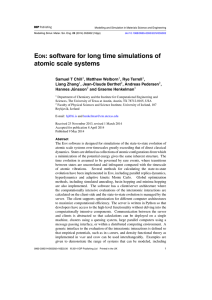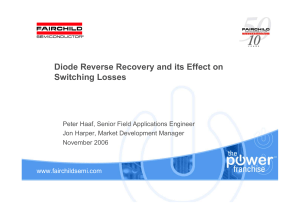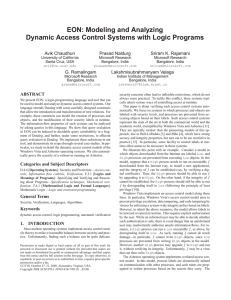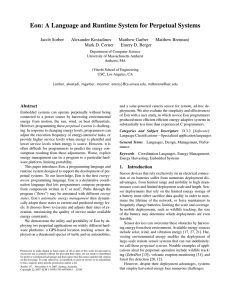Chapter 3 - Doral Academy Preparatory
advertisement
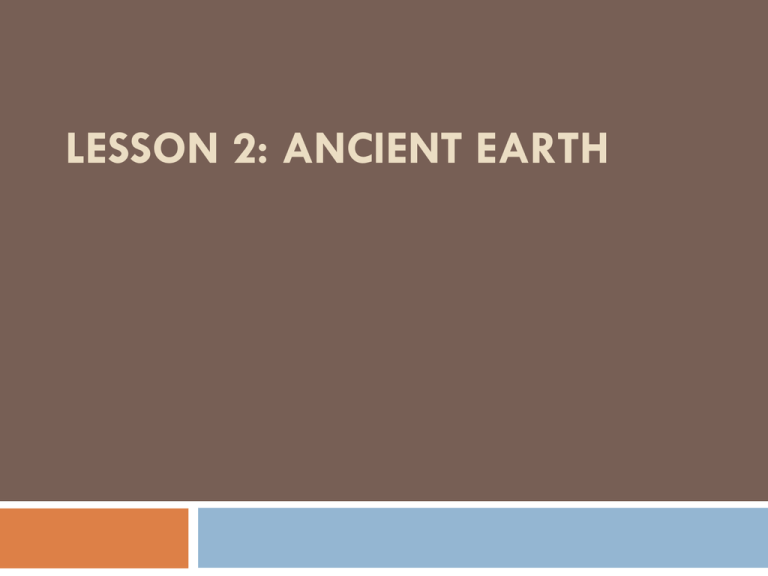
LESSON 2: ANCIENT EARTH Essential Questions How did gravity affect Earth’s formation? How did the oceans and atmosphere form? What conditions made early Earth able to support life? How did environmental changes affect the evolution of life? Vocabulary Hadean eon Archean eon Protocontinent Proterozoic eon Thermal energy Earth’s Earliest History Gravity and the Solar System Before Earth or even the solar system existed, a cloud of gas, ice, and dust, called a nebula, floated in space Earth’s Earliest History First: Gravity pulled the particules together into a flattened disk shape and began to rotate. Second: the material in the center became dense and the Sun formed Third: the remaining pieces of material in the disk attracted each other and planets were formed Spherical Earth As more particles come together Earth became larger. Thermal energy is produced by collisions, which warmed the planet. Asteroids continued to crash into the Earth surface, making it even hotter. Hadean Eon, Archean Eon, Proterozoic Eon Hadean Eon The first 640 million years of Earth history Hadean Eon The first 640 million years of Earth history Formation of Earth’s Core A hot Earth cools Seas of Molten Rock Changes in the Seas The Ancient Athmosphere Archean Eon From about 4 to 2.5 billion years ago Archean Eon Earth continues to cool and first solid surface appeared, but still twice as much internal thermal energy was produced at that time, comparing to nowadays. Volcanic Activity The Earliest Continents As magna rised to the surface through cracks in the ocean floor it has formed Earth first oceanic crust. Protocontinents: small and early continents which have collied between each other forming bigger landmasses Earth’s Oceans Form Fossil bacteria and stromatolites are the earliest evidence of life present in rocks. They are uncommon and difficult to see due to their microscopic size. The Archean oceans were extreme environments, most organisms alive today would not have survived then. Proterozoic Eon From 2.5 to 0.542 billion years ago Proterozoic Eon Changes in the Atmosphere: Earth was cooling down and larger landmasses were formed. Increase in Oxygen Snowball Earth Supercontinents and Shallow Seas Proterozoic Life Unicellular organisms in water. First multicellular organisms in the ocean, but had no hard parts, so fossils aren’t abundant. Homework Textbook: Page 94 #2, 3, 4 Workbook: Page
